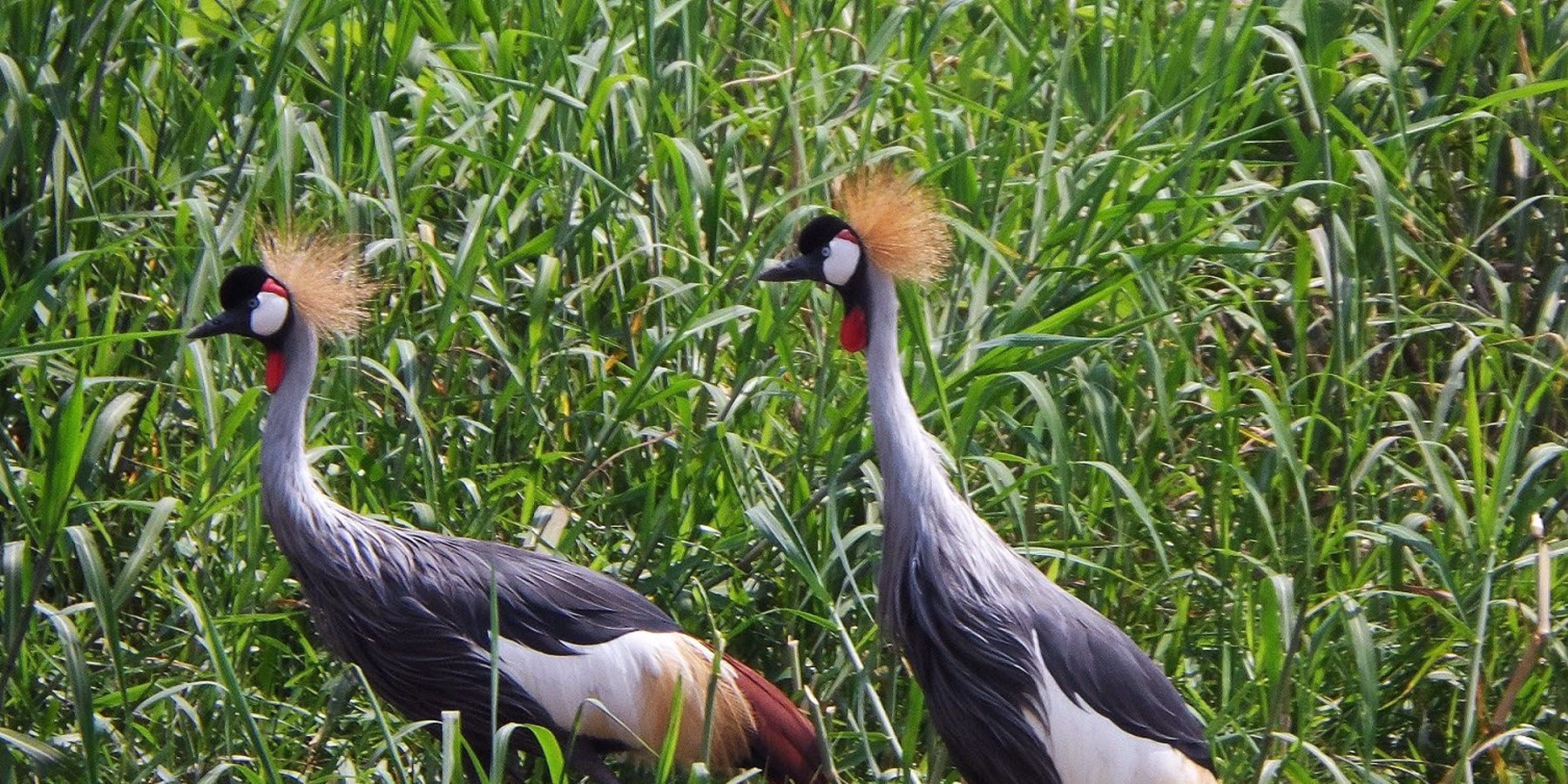
Majestic Balearica Regulorum
The grey crowned crane tends to favour the dry grasslands and savannahs. However, when the time comes for it to nest, it will likely move on to wetter areas. Generally, they can be encountered in flatlands that are covered in grass, as well as near marshes, lakes, and rivers.
This bird, like all cranes, is an omnivore. Therefore, its diet includes grass tips, nuts, soybeans, maize, and millet, as well as insects and other small animals that can be found at ground level (including frogs, snakes, fish, and aquatic eggs). Because they often walk along with grazing antelope, they are sometimes able to seize the little animals that leap out of the grazers’ way. The crowned crane is a sociable bird, and flocks of between 30 and 150 individuals can be expected. This bird is an able communicator and known for the loud honks that it uses.
The birds will prepare a large nest, which forms a platform made out of grass and other plants. They position this nest in the tall grasses and reeds of the wetland. Usually, they lay between two and five shiny white eggs, which both the male and female of the sexes will take turns to incubate for around a month. When the chicks are born, they are already well developed and do not need to be taught to walk, or even run, as they are able to do this immediately. Chicks fledge within the first 55 to 100 days of their lives. The grey crowned crane lives for up to 22 years.
There has been a dramatic drop in the population numbers of the grey crowned crane all over the continent. A major reason for this is the live trade of these beautiful birds for the purpose of moving them from the wild into zoos, parks, and aviaries. Other threats include poisoning, habitat loss, and collisions with power lines.
#Africantrips
#Ugandasnationalbird
#Bridsofeastafrica
#BirdwatchingwithGodie

